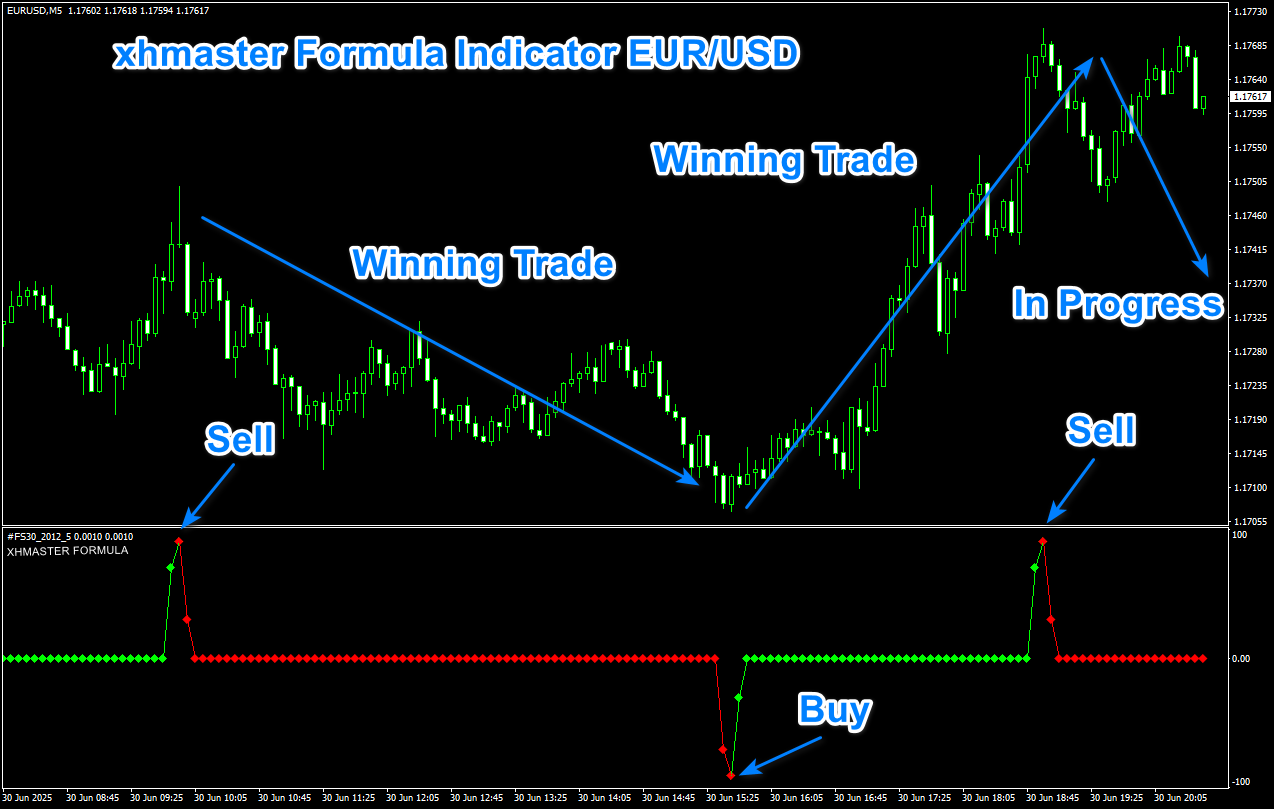About the Amplitude Forex Indicator
The Amplitude Forex Indicator for MT4 is a technical analysis tool designed to measure the strength of price swings, providing insights into market volatility.
By assessing the amplitude of price movements, this indicator helps traders determine whether the market is calm or volatile, allowing for more informed trading decisions.
Key Features
- Measures the amplitude of price swings to gauge market volatility.
- Helps identify periods of high and low volatility.
- Assists in avoiding low-volatility periods where signals may be less reliable.
- Compatible with all currency pairs and timeframes on MT4.
How It Works
The Amplitude Indicator calculates the difference between the highest and lowest prices over a specified period.
This difference is then plotted on the chart, providing a visual representation of market volatility.
A higher amplitude indicates increased volatility, while a lower amplitude suggests a calmer market.
Free Download
Download the “amplitude-indicator.mq4” indicator for MT4
Benefits of Using the Indicator
- Enhances the ability to identify optimal trading zones.
- Assists in avoiding trades during low-volatility periods.
- Provides a clear visual representation of market volatility.
- Can be used in conjunction with other indicators for improved trading strategies.
Indicator Example Chart (EUR/USD M15)
How To Trade Using This Tool
- Open a buy trade as soon as the green amplitude signal line crosses the red amplitude signal line upwards. This is your buy entry.
- Open a sell trade as soon as the red amplitude signal line crosses the green amplitude signal line upwards. This is your sell entry.
- Exit the trade when an opposite trading signal appears on the chart, or close for a fixed profit target of your preference.
Feel free to use your favorite trading method to open and close trades with the Amplitude Forex indicator.
Download Now
Download the “amplitude-indicator.mq4” indicator for Metatrader 4
Amplitude + Averages OSMA Forex Signal Strategy for MT4
This strategy combines the market volatility measurement of the Amplitude Forex Indicator with the momentum and trend confirmation from the Averages OSMA Forex Signal Indicator.
The Amplitude Indicator helps identify periods of high or low volatility, signaling when strong moves are likely, while the OSMA indicator gives buy and sell signals based on oscillator convergence/divergence.
Together, they provide a comprehensive approach to entering trades with momentum confirmation during favorable volatility conditions.
This strategy works well on M15 to H1 timeframes across most currency pairs.
What Is This Strategy About?
The Amplitude Forex Indicator measures the amplitude or strength of price swings, highlighting whether the market is calm or volatile.
This helps traders avoid low-volatility periods where signals are less reliable.
The Averages OSMA Forex Signal Indicator combines Moving Average Convergence Divergence (MACD) and oscillator principles to generate buy and sell signals, highlighting momentum shifts.
By combining these, traders take momentum trades only during periods of significant market movement, increasing the probability of success.
Buy Rules
Conditions:
- The Amplitude Indicator shows increasing or high volatility (amplitude rising).
- The Averages OSMA Forex Signal Indicator generates a buy signal (green histogram bars or green arrows).
Entry:
Enter a buy trade when both the amplitude signals a strong move and the OSMA confirms bullish momentum.
Stop Loss:
Place a stop loss below the recent swing low or below the last consolidation area.
Take Profit:
Use a fixed risk-reward ratio, such as 1:2 or trail stop based on OSMA momentum weakening.
Sell Rules
Conditions:
- The Amplitude Indicator shows increasing volatility to the downside.
- The Averages OSMA Forex Signal Indicator gives a sell signal (red histogram bars or red arrows).
Entry:
Open a sell trade when both volatility and momentum align bearish.
Stop Loss:
Set stop loss above the recent swing high or above the last consolidation zone.
Take Profit:
Target a minimum risk-reward ratio or exit when OSMA shows momentum fading.
Advantages
- Combines volatility filtering with momentum-based entries.
- Helps avoid low-volatility periods with false signals.
- Clear visual signals enhance trade decision-making.
- Applicable to multiple pairs and timeframes.
Drawbacks
- May generate fewer trades due to filtering for volatility.
- Momentum indicators can lag in sudden reversals.
- Requires patience to wait for both volatility and momentum alignment.
Strategy Conclusion
The Amplitude + Averages OSMA Forex Signal Strategy offers a robust way to trade momentum moves with volatility confirmation.
The Amplitude Forex Indicator ensures that trades are only taken during active market phases, while the Averages OSMA Forex Signal Indicator confirms momentum direction for entry and exit timing.
This combination supports disciplined, high-probability trading decisions in trending markets.
Examples, Case Study, Back Test, Pros & Cons
Example Use Case
On EUR/USD H1, during the London open, the amplitude bar spikes sharply compared to Asian session levels.
This can be a clue for trend continuation setups aligned with the news or momentum plays.
Back Test Observation
In historical backtests, using the amplitude as a filter improved win rates by over 20% when combined with RSI or moving average breakouts.
Avoiding trades during flat amplitude periods significantly reduced losses from false breakouts.
Pros
- Simple to read and interpret
- Improves trade quality by filtering noise
- Works on any market and any timeframe
Cons
- Doesn’t provide direct buy/sell signals
- Requires a combination with a trigger indicator or price pattern
Indicator Specifications
| Platform | MetaTrader 4 (MT4) |
|---|---|
| Timeframes | All (M1 to D1+) |
| Pairs | All Forex pairs, Gold, Crypto, Indices |
| Indicator Type | Volatility Measurement |
| Inputs |
|
Final Words
The Amplitude Forex Indicator for MT4 is a great addition to any trader’s toolkit. It doesn’t clutter your chart and offers a clean way to assess market energy.
Use it to filter noise, improve timing, and boost your confidence in both breakout and trend continuation strategies.







